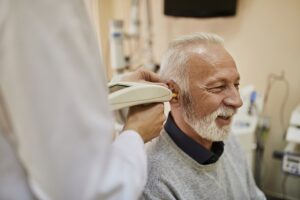 A new study on hearing loss was published in The Lancet Regional Health-Americas journal. This study was led by NORC, a research organization at the University of Chicago. It reveals that approximately 37.9 million Americans experience hearing loss. Interestingly, the study finds that hearing loss is more prevalent in rural areas than urban settings and is more common among men than women.
A new study on hearing loss was published in The Lancet Regional Health-Americas journal. This study was led by NORC, a research organization at the University of Chicago. It reveals that approximately 37.9 million Americans experience hearing loss. Interestingly, the study finds that hearing loss is more prevalent in rural areas than urban settings and is more common among men than women.
Unlike previous studies, this research delves into hearing loss rates at the county and state levels, specifically focusing on the year 2019 and considering individuals with hearing impairment in both ears. While the study cannot pinpoint the exact reasons for this geographic discrepancy, experts in hearing loss suggest two crucial factors: the loudness of noises and the frequency of exposure to them.
Advertisement
Nicholas Reed is an audiologist and an assistant professor of epidemiology at Johns Hopkins University. He notes that individuals in bustling urban environments, such as subway commuters, might endure six to eight hours before facing a risk of hearing loss. In contrast, those engaged in activities like hunting, where ear protection is often neglected, can experience hearing damage after just a few trigger pulls.
Experts emphasize the need for improved access to hearing screenings and specialists in rural areas, where many jobs involve the use of loud machinery. Leisure activities popular in rural regions, such as woodworking, hunting, or riding all-terrain vehicles, also contribute to an increased risk of hearing impairment.
The study further highlights that men face a higher risk of hearing loss than women, with the risk beginning at age 35. This aligns with earlier estimations, and the highest rates are observed among non-Hispanic white individuals and those aged 65 and older.
David Rein is the director of NORC’s public health analytics program. He is the lead author of this study and emphasizes that age is the primary risk factor for hearing loss.
Melanie Buhr-Lawler is a clinical professor and an audiologist from the University of Wisconsin-Madison. She was not involved in the study but emphasized the unique challenges faced by individuals in rural areas, where both work-related and leisure activities expose them to higher noise levels. She recounts her experience distributing earplugs at a tractor pull in rural Wisconsin as part of efforts to raise awareness about hearing health.
The study, funded by the U.S. Centers for Disease Control and Prevention, sheds light on the importance of addressing hearing health disparities, especially in rural communities, and underscores the significance of protective measures in noisy environments.
